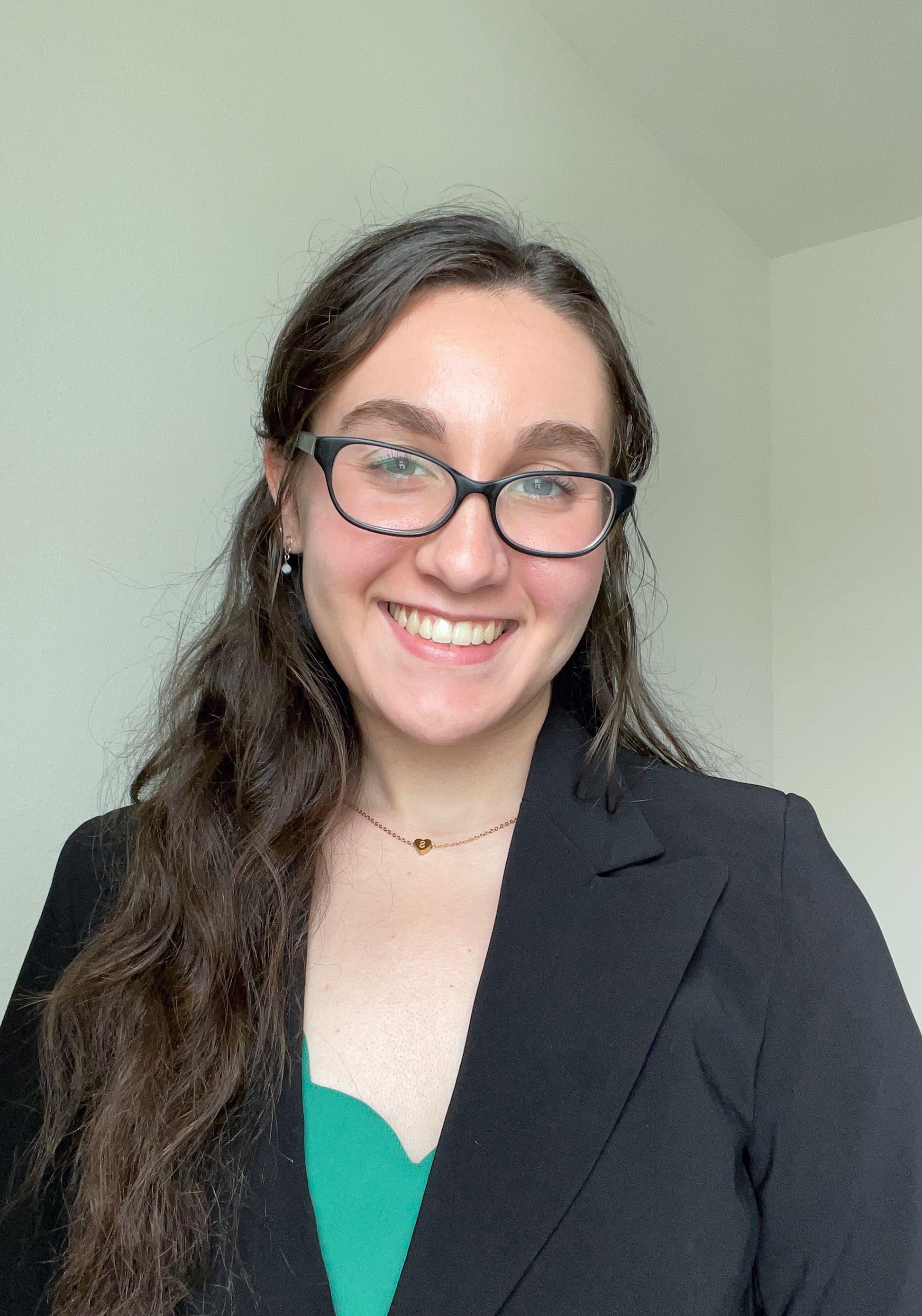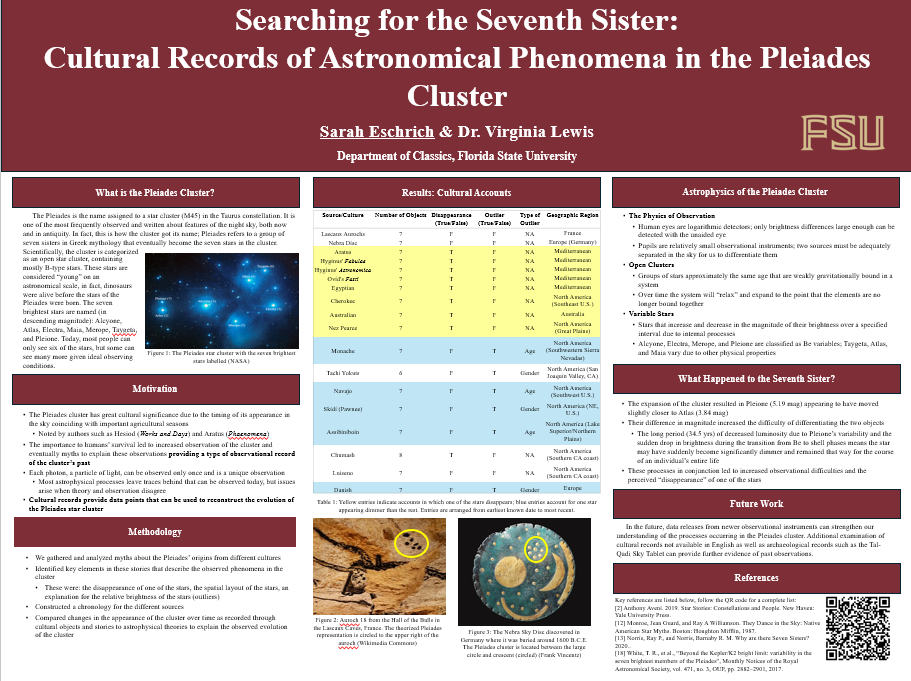Research Symposium
25th annual Undergraduate Research Symposium, April 1, 2025
Sarah Eschrich Poster Session 2: 10:45 am - 11:45 am/ Poster #240

BIO
Sarah Eschrich is a current Senior double majoring in Physics & Astrophysics and Classics. Her research interests are interdisciplinary by nature, exploring research at the intersection of those two fields utilizing modern physics knowledge and technology to improve scholars’ understanding of cultural records and material culture from antiquity. After graduation she is seeking a career in academia, integrating quantitative methods and techniques from her background in STEM to better collect, analyze, and interpret information about past peoples and cultures. From central Florida, Sarah is also a professional ballet dancer and instructor with the Tallahassee Ballet where she enjoys the opportunity to educate the next generation of young dancers.
Searching for the Seventh Sister: Cultural Records of Astronomical Phenomena in the Pleiades Cluster
Authors: Sarah Eschrich, Dr. Virginia LewisStudent Major: Physics & Astrophysics and Classics
Mentor: Dr. Virginia Lewis
Mentor's Department: Classics Mentor's College: Arts & Sciences Co-Presenters:
Abstract
The Pleiades – a star cluster in the Taurus constellation – is one of the most notable features in the night sky. Because of this, many mythical accounts, spanning geographically distinct cultures, can be identified, each offering an explanation for the cluster’s current location in the sky. While identifying the themes and commonalities between these myths can provide important observations about the culture that produced them, examining these accounts for remnants of observed astronomical phenomena can also serve to illuminate the celestial history around us. This study collected and compared eighteen different cultural accounts of the Pleiades myth and identified the similarities between the mythic accounts. By comparing these conclusions with astronomical data and models for the evolution of the star cluster, this study suggests that the Pleiades cluster has dynamically expanded over time. In combination with an examination of the variability in luminosity of the seven stars, this provides scientific support for the recorded perception by ancient cultures that one star “disappeared.” Since the Pleiades cluster is relatively young and is located near to Earth, studying its evolution is crucial for understanding the physical processes that govern more complex and distant star clusters. Understanding the observations that ancient people made concerning the Pleiades can provide necessary context with which to understand these stories, but, ultimately, this type of interdisciplinary study can be used to better understand the myths and stories about the natural world that have persisted into the modern era and provide observational evidence for past astronomical phenomena.
Keywords: Mythology, Pleiades, Star Cluster, Variable Stars, History of Astronomy


